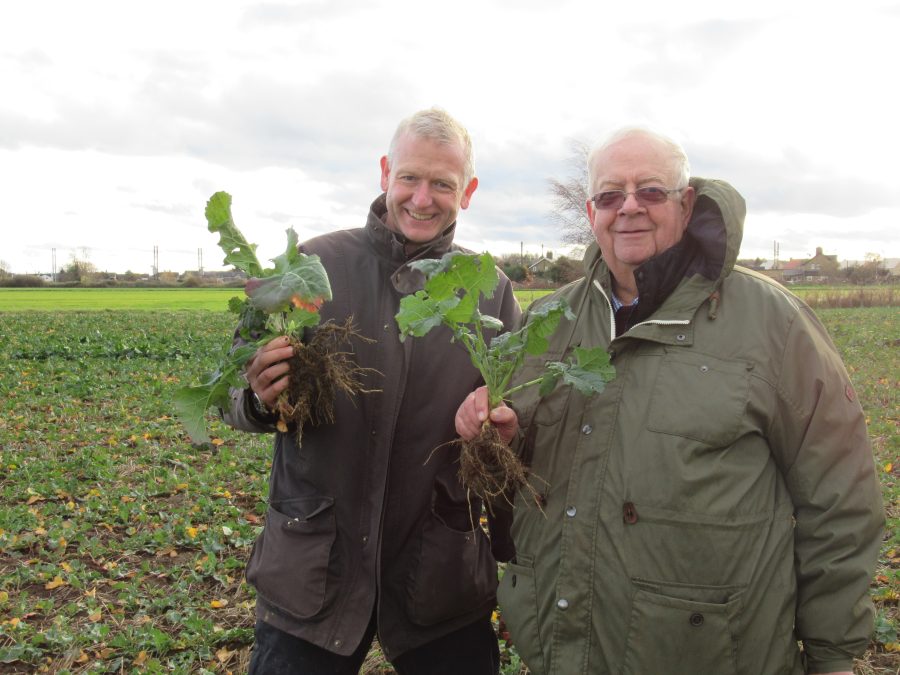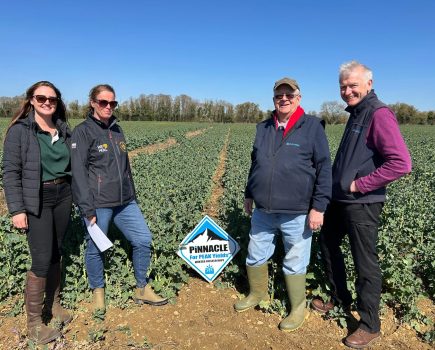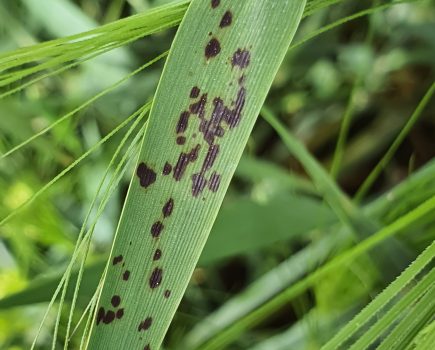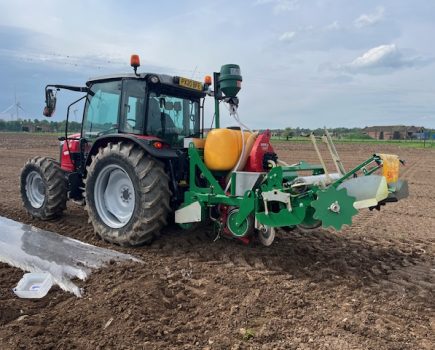Good establishment of oilseed rape is an essential start to growing a good crop with a decent yield, says Neil Groom, general manager for Grainseed. He thinks that the price of rape will recover well by next harvest, and this will mean that rape will outperform most other break crops from the profitability standpoint. Growers can use the normal equipment on the farm, with no need for special investment in machinery and they can use herbicide chemistry in rape which has a different mode of action to those used in wheat, thereby helping with the problem of herbicide resistance. Neil says, “I am anticipating a revival in the area of rape this autumn.” The AHDB early bird survey predicts an increase of 14% over last year’s area, up to 416,000 hectares in 2023 harvest.
Grainseed says that growers intending to grow oilseed rape this autumn should start by carefully studying the varieties available, comparing their disease ratings, maturity ratings, vigour and standing power. Rape must be established successfully into a moist warm seedbed preferably during the first two weeks of August. Moisture in the seedbed is important.
To achieve a good yielding crop, there are key management decisions including variety choice for successful establishment, for even crop emergence and for easier crop management.
Variety choice
Choose varieties with good vigour, in the autumn and the spring. Neil points out that vigour is an individual variety trait, not one that can be always associated with the rape type e.g., conventional or hybrid. There are some conventionals which are more vigorous that any hybrid and some hybrids that are not vigorous. The new rape variety Pi Pinnacle, bred by Mike Pickford specifically for the UK market, has a much larger seed than most varieties and can provide more energy to germinate and grow. It shows good autumn establishment, growing away vigorously in the autumn and it also shows spring vigour.
Pi Pinnacle was bred in the Cotswolds by Mike Pickford who has been focusing on the UK oilseed rape market for over half a century. Mike has more experience in breeding rape than anyone else in the UK and is fully independent. In the rape market, he is the only plant breeder focusing on breeding conventional oilseed rape varieties nowadays. Most other breeders are focusing on hybrids.
“I aim to breed varieties that are ideally suited to UK conditions. My breeding philosophy is simple and that is to improve individual yield components, such as increasing the size of the seed. Pinnacle has seed with a thousand grain weight between 6.5 to 7gms compared to Campus at 5 to 6 gms.” he says.
Select varieties with good all-round disease resistance. Wheat growers would never dream of not comparing disease resistance. So, this should be the normal practise in rape, says Neil. All Grainseed rape varieties have good all-round disease control with multigene resistance to Phoma stem canker, good light leaf spot ratings and tolerance to Verticillium. Pinnacle has a 7 rating for Light leaf spot, a 6 for Phoma and it also has good Verticillium resistance, a disease that is showing up in crops at the moment. Choosing a Verticillium wilt resistant variety is important as there are no chemicals approved for Verticillium control. Choosing a variety with good all-round disease resistance may allow better timing of an autumn fungicide or even missing out a spray altogether.
Choose a variety that has good stem strength and standing power to avoid lodging which is highly detrimental to yield. In terms of agronomics, Pinnacle has a top 9 rating for lodging resistance and an 8 for stem stiffness. It also maintains clean green stems when ripening allowing more efficient photosynthesis during the ripening grain filling process.
In terms of ripening, Pinnacle is medium to early, similar to Campus. This allows the following crop to be planted in good time whilst the rape seed is already in storage. Mike adds that Pinnacle is a large-seeded variety with good oil content of 44.3%.
Go for a conventional variety to save on seed costs. Hybrid seed costs around £250 a bag for three-hectares (costing £83.33/ha) whereas Pinnacle conventional seed costs £137.50/2 million seed pack for a 2.5-hectare bag @80 seeds/m²(costing £55/hectare). You are also able to save your seed. with rising costs for fuel fertiliser and chemicals, it is worth looking at this to reduce costs.
Obviously go for a variety which shows good consistent yield. In the RL candidate table, Campus yielded 5.05 t/ha, but Pinnacle yielded 5.25t/ha. With oilseed rape at £400/t, this is equivalent to £80/ha benefit of Pinnacle.
Agronomy
Plan your rotations carefully to allow the best conditions for rape and next year’s first wheat. NIABTAG trials show that a previous crop of rape increases yield of following wheat by 31%, as it fits better into the rotation and allows an optimum drilling window for wheat.
Drilling date Growers should avoid OSR drilling which can clash with the peak Cabbage Stem Flea Beetle migration in early September. If you sow rape before mid-August, you allow the crop to emerge and grow strongly before Cabbage Stem flea beetle migration begins. If you sow later in the second half of September the crop could emerge after peak pest migration reducing the threat of adult beetle feeding. Cabbage Stem Flea Beetle (CSFB) pressure is higher in closer rotations. Rape should be grown in a five to six years rotation to avoid CSFB damage as well as clubroot and Verticillium build up in the soil.
Cut straw of the previous crop higher – this puts off pigeons from landing and longer stubbles encourage beneficial insects such as ground beetles and spiders. Flea beetles detect green crops, and a longer stubble appears brown in colour, and because of this it tends to deter the insect pest, especially whilst the plants are at the vulnerable cotyledon stage.
Drill into warm moist seedbeds – this is an essential prerequisite and is the most important rule for establishing a good crop. Try to drill in the first 2 weeks of August. A good seedbed will provide good soil to seed contact and avoid clods for flea beetles to take cover.
Use an adequate seed rate (for conventionals around 80 seed/metre², hybrids 50 seeds/metre²). This will be an area farmers can save money by choosing one of the best conventional rather than hybrids which require a higher seed rate and more expensive seeds.
Apply fertiliser in the autumn to give the crop an early boost.
Double roll to improve seed to soil contact.
Use companion crops containing species such as buckwheat, berseem clover and fenugreek. Companion crops can mask the attraction that rape has to CSFB, and they can attract beneficial insects. They act as a sacrificial crop. They can also help with soil health, soil drainage, soil structure and reducing pigeon grazing.
Keep your establishment costs as low as you can, for the best margin potential.
Neil remarks that “We have a small amount of seed of Pinnacle for this autumn if growers would like to try it. We have high hopes for this variety in the future.”
Top picture: Neil Groom with Mike Pickford
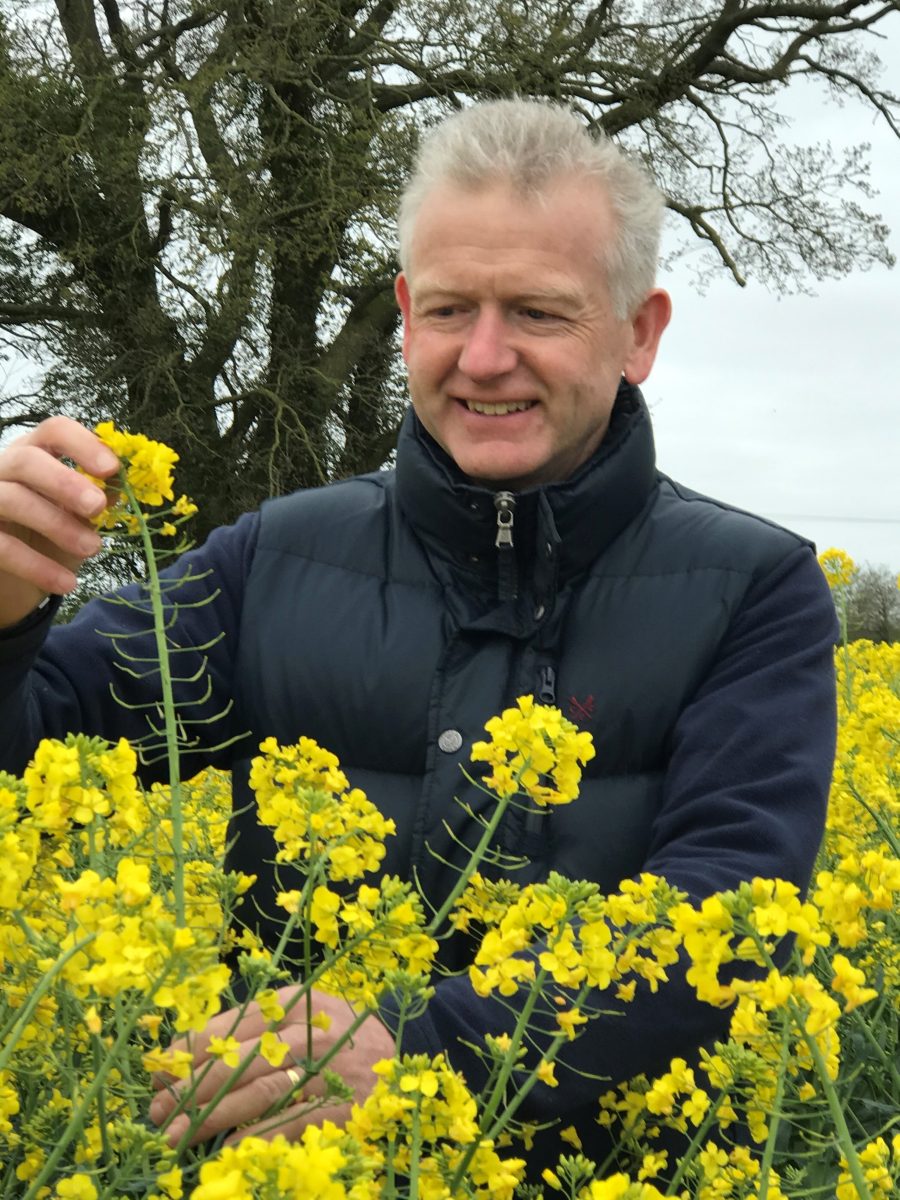
Neil in a field of flowering Pinnacle

